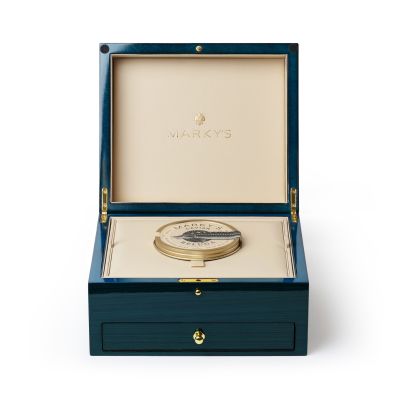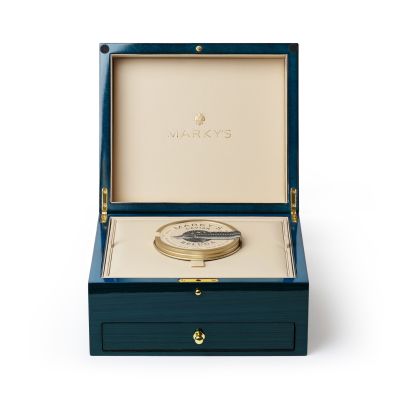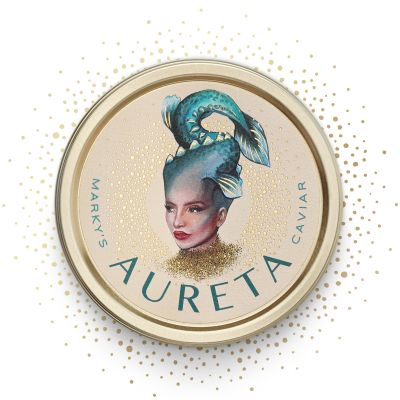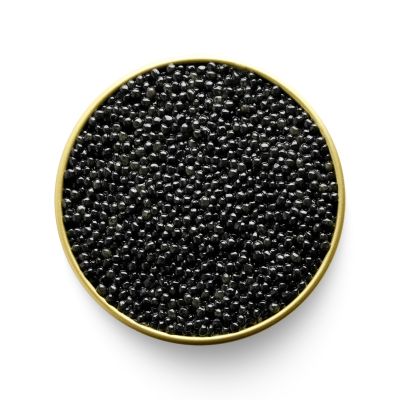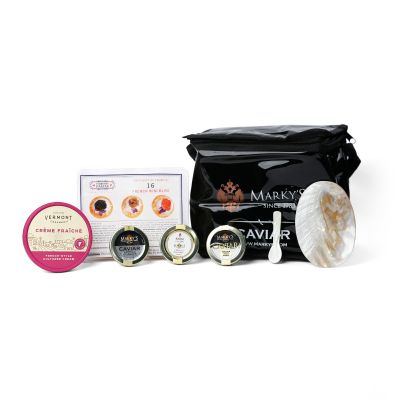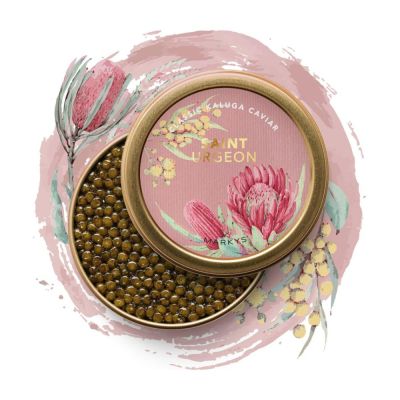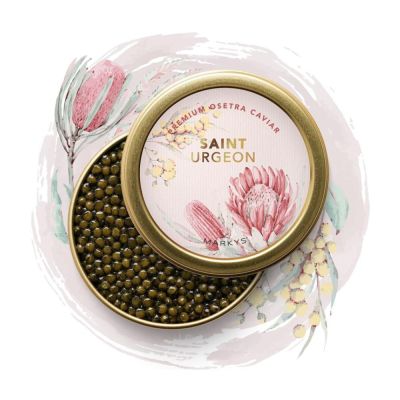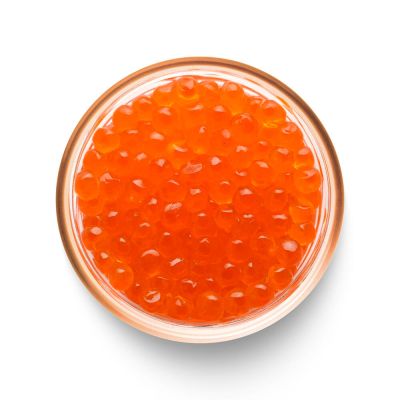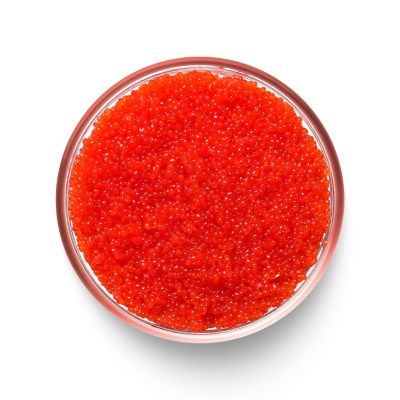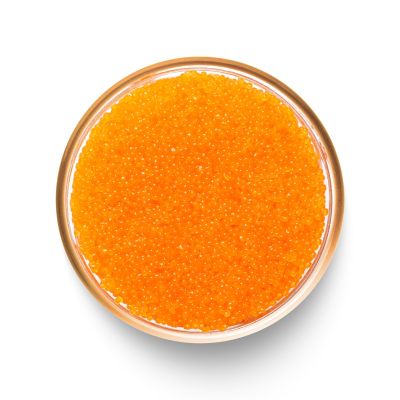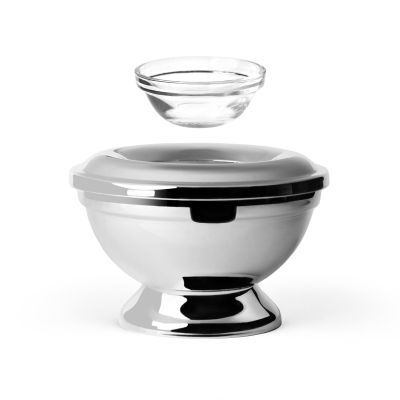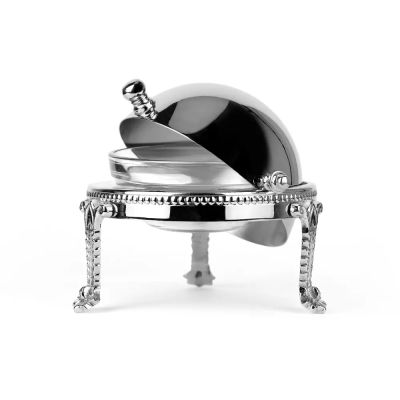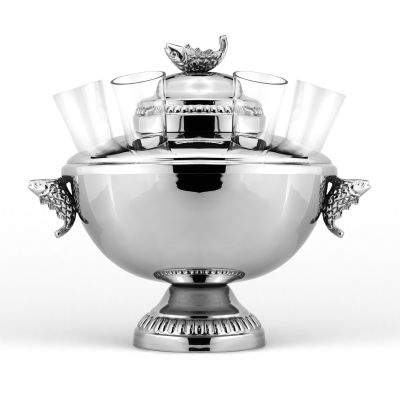Caviar

Beluga (Grade 00) Deluxe Experience
FROM $770Beluga (Grade 000) Deluxe Experience
FROM $1,020Aureta Special Reserve Kaluga
FROM $280Aureta Imperial Golden Osetra
FROM $800American Paddlefish
FROM $35American Hackleback
FROM $49American White Sturgeon
FROM $86Siberian Sturgeon
FROM $80Osetra Karat Black
FROM $85Osetra Karat Amber
FROM $100Osetra Royal Amber
FROM $100Kaluga
FROM $70Kaluga Royal Amber
FROM $85Pink Salmon Roe
FROM $12Caviar Connoisseur Gift Set
$1,264Nation's Caviar Gift Basket
$152 $159Saint Urgeon Classic Kaluga
FROM $80Saint Urgeon Premium Osetra
FROM $100Sevruga
FROM $125Beluga Hybrid
FROM $155Keta Salmon Roe
FROM $14Marky's Handmade Blini
FROM $15Special Reserve: Osetra
FROM $205Osetra Karat Gold
FROM $205Beluga Hybrid Imperial
FROM $190Kaluga Imperial Gold
FROM $170Siberian Sturgeon - Italy
FROM $90White Sturgeon - Italy
FROM $90Pink Trout Roe
FROM $19Smoked Trout Roe
FROM $28Red Tobiko (Flying Fish Roe)
FROM $26Black Tobiko (Flying Fish Roe)
FROM $26Orange Tobiko (Flying Fish Roe)
FROM $26Wasabi Tobiko (Flying Fish Roe)
FROM $26Red Masago (Capelin Roe)
FROM $15Orange Masago (Capelin Roe)
FROM $15Ginger Masago (Capelin Roe)
FROM $15Wasabi Masago (Capelin Roe)
FROM $15American Pride
FROM $15Strömluga
$23Golden Whitefish
FROM $17Pike Roe
FROM $20Caviar Butter
$68Crème d'Isigny
$10Quail Eggs
$10Mother of Pearl Caviar Plate
FROM $18Mother of Pearl Caviar Spoon
FROM $5Marky's Cooler Bag
FROM $11Private Stock: Almas Osetra
FROM $445Private Stock: Osetra Imperial Gold
FROM $260Private Stock: Osetra Royal Amber
FROM $105Private Stock: Beluga Hybrid di Venezia
FROM $250Private Stock: Sevruga
FROM $145Private Stock: Kaluga Imperial Gold
FROM $250Private Stock: Kaluga Royal Amber
FROM $95Private Stock: Keta Salmon Roe
FROM $30Private Stock: Rainbow Trout Roe
FROM $40
For over three decades, Marky's has been well known to gourmet food connoisseurs as always having the highest quality delicacies. Founded in 1983, Marky's Caviar Store has managed to keep its reputation as an incredibly reliable supplier of the highest quality caviar; since then, we've grown to also offer many of the world's best gourmet specialties. As a result, we've become the biggest caviar manufacturer in the country and the biggest importer of a wide range of gourmet products.
Caviar is a luxurious delicacy known for its exquisite taste and texture. It's often associated with luxury dining and is highly sought after by gourmet enthusiasts. Caviar consists of the processed eggs, or roe, of sturgeon fish, particularly Beluga Huso huso, Osetra, and Kaluga. Among these, Beluga caviar is renowned for its exceptional quality and is considered one of the most expensive caviar varieties. Like many others, this premium product can be found in Marky's premium caviar selection, where you can explore different types of caviar and compare caviar prices to find the best caviar for your tastes.
Caviar is not limited to sturgeon; it can also be sourced from other fish, such as salmon, resulting in products like salmon roe caviar or roe caviar in various colors. These variations offer a unique flavor profile, appealing to those looking for alternatives to traditional sturgeon caviar. When it comes to caviar tasting, enthusiasts often indulge in a sensory experience to savor the nuances of various caviar types, including Paddlefish, White Sturgeon, and Hackleback. These tastings help identify the best caviar for one's palate, be it a preference for the richness of Beluga caviar, the delicate flavors of Ossetra caviar, or the uniqueness of Almas caviar.
Intriguingly, the world of caviar is not just about its exquisite taste; it's also about the exclusivity and prestige that come with indulging in this delicacy. As you explore the caviar market and research caviar for sale, you'll discover that some of the sturgeon caviar price points are treasured for their rarity and unparalleled flavor. Whether you're a seasoned connoisseur or a newcomer looking to buy caviar, Marky's is your gateway to the finest caviar products. Explore caviar innovations like caviar butter to elevate your culinary creations and delve into the world of luxury with Almas caviar. Don't miss the opportunity to experience the indulgence of caviar, available right here at Marky's online gourmet store.
Caviar's origins can be traced back to ancient times, with records suggesting that it was consumed by Persian royalty of the Achaemenid Empire as early as the 4th century BC. The word "caviar" itself is derived from the Persian word "khavyar," meaning "egg".
Throughout history, caviar was often reserved for the elite and served at royal banquets. The Caspian Sea region, particularly the areas around Iran and Russia, became renowned for producing some of the finest caviar in the world. In particular, Beluga caviar, Golden Osetra caviar, and Kaluga Imperial caviar gained international acclaim for their unique flavors and textures.
In the 19th century, the demand for caviar began to grow beyond royal circles, and it became a sought-after delicacy in Europe and the United States. Sturgeon, the primary source of caviar, faced overfishing and habitat destruction, leading to conservation efforts and regulations to protect these magnificent fish.
As the popularity of caviar spread, caviar dishes and preparations evolved, including caviar-topped blinis, caviar butter, and more. Caviar's reputation as the epitome of luxury continued to grow, making it a status symbol in fine dining and gourmet cuisine.
In recent years, the caviar market has expanded to include various types of caviar, such as Paddlefish and Hackleback caviar, providing a range of options to cater to different tastes and budgets. Marky's has played a significant role in this evolution, offering farmed and responsibly-sourced caviar for sale to enthusiasts worldwide.
Today, caviar remains an enduring symbol of sophistication and extravagance, with caviar enthusiasts exploring its history and culinary possibilities. Whether you're a connoisseur seeking the finest caviar or someone eager to try this gourmet delight for the first time, the legacy and allure of caviar continue to captivate palates worldwide.
When it comes to finding the best caviar in America, you have a variety of options to choose from, thanks to the availability of high-quality caviar from reputable sources like Marky's Gourmet. Marky's offers an extensive selection of Malossol caviar types, including Beluga caviar, Osetra caviar, Kaluga caviar, Paddlefish caviar, and Hackleback caviar, among others.Marky's Beluga caviar is often considered the best caviar in America, known for its large, delicate pearls and rich flavor. Marky's provides access to this and other exquisite caviars through our website and at our stores and restaurants in the Miami and New York City areas, ensuring that you can indulge in the finest caviar varieties right here in the USA.
With its distinct nutty and buttery taste, Ossetra caviar is another popular choice among caviar aficionados. Marky's offers this caviar sourced from the best producers, allowing you to savor its exquisite flavor and quality.
Kaluga sturgeon caviar is a top contender for those seeking a unique caviar experience. With large, glossy pearls and a mild, buttery taste, it's a sought-after choice among gourmets.
On the other hand, Hackleback and Paddlefish caviar provide excellent options for those looking for high-quality caviar at a more accessible price point. These caviar varieties offer a delightful taste and texture without breaking the bank.
When considering the best caviar in the USA, it's essential to factor in personal preferences, budget, and the occasion. Whether you're looking to buy caviar for a special celebration or simply want to elevate your culinary creations, Marky's Gourmet has the caviar selection, including caviar dishes and caviar butter, to meet your needs.
Exploring the world of caviar can be an exciting journey, and Marky's online gourmet store makes it easy to find the perfect caviar for your palate. With a wide range of options and a commitment to quality, Marky's has established itself as a go-to destination for caviar enthusiasts, ensuring that you can easily enjoy the best caviar in the USA.
The difference between caviar and fish roe lies in the type of fish whose eggs are harvested, the processing methods, and the culinary status of the product.
Caviar typically refers to the roe (eggs) of sturgeon fish in the Acipenseridae family, such as Beluga sturgeon, Osetra sturgeon, and Kaluga sturgeon. These species are highly prized for their roe, which is processed and salt-cured to create this luxurious and iconic delicacy. Caviar is renowned for its delicate, distinct flavors, buttery texture, and elegant appearance, featuring beautiful, glistening pearls. It's often considered the pinnacle of luxury when it comes to gourmet specialties.
On the other hand, in a broader sense, fish roe includes the eggs of various fish species, not just sturgeon. For example, salmon roe, also known as salmon caviar, comes from salmon fish. Eggs from other species like trout, whitefish, or lumpfish are also referred to as fish roe. Fish roe can vary in size, flavor, and texture based on the species it comes from. It is often used in a wide range of culinary applications, from sushi toppings to spreads and garnishes.
In summary, the primary differences between caviar and fish roe are the fish species they originate from, the specialized processing methods used for caviar, and the esteemed status associated with caviar as a luxury product. While both caviar and fish roe offer unique tastes and textures, caviar is the more exclusive and celebrated of the two, particularly when sourced from premium sturgeon varieties like Beluga, Osetra, and Kaluga, as mentioned earlier.
Caviar is made through a meticulous and precise process to ensure its quality and flavor. The steps involved in making caviar can vary slightly depending on the specific type and desired characteristics, but in general, caviar production follows these steps:
Harvesting:The process begins with the careful harvesting of the fish roe. For sturgeons, this is typically done by extracting the entire roe pouch.
Separating:The freshly harvested roe pouch is delicately rubbed on a mesh grate to separate individual eggs from each other and the mother membrane.
Cleaning:The separated eggs are meticulously washed and then inspected by hand to remove any impurities, membranes, or connective tissues. This step is crucial to ensure the purity and pristine appearance of the caviar.
Salting:Salt is a critical ingredient in caviar production, as it not only enhances flavor but also acts as a preservative. Following Malossol practices, the cleaned roe is gently mixed with a precise amount of salt and left to rest for a specific duration to allow the flavors to develop.
Curing:During the curing process, the salted roe is stored in cool, controlled environments. The duration of curing varies depending on the type of caviar being produced, ranging from a few days to several months. This step allows the salt to penetrate the eggs, resulting in the desired texture and flavor profile.
Packaging:Once the caviar has undergone the curing process, it is carefully packaged in airtight containers to maintain its freshness and prevent oxidation. These containers are typically made of glass or certain metals to preserve the delicate flavors.
Grading:Caviar is often graded based on various factors, including the size, color, and firmness of the eggs. The most prized caviar typically consists of large, uniform pearls with a light, translucent appearance.
Storage:Proper storage is crucial to maintain the quality of caviar. It should be stored at temperatures just above freezing, ensuring that it remains fresh until it's ready to be enjoyed.
It's important to note that the process of making caviar requires a great deal of skill and expertise, and variations in production methods can result in different flavors and qualities of caviar. Additionally, the type of sturgeon, such as Beluga, Osetra, or Kaluga, and the location where it is harvested can significantly influence the final product.
The care and precision involved in making caviar contribute to its status as a delicacy and symbol of culinary excellence. When you're savoring Marky's Beluga or other caviar types, you're experiencing the result of a meticulous and time-honored process that's been perfected over centuries.
Sturgeon farming, also known as sturgeon aquaculture, has become essential for producing high-quality caviar and supporting the conservation of sturgeon populations in the wild. One notable facility where Beluga caviar is produced through sustainable farming is our own Sturgeon Aquafarms, the only legitimate source of purebred Beluga Huso huso caviar in the United States. However, Marky's also offers other caviars carefully sourced from sustainable farms elsewhere in the US, Europe, the Middle East, and Asia.
In general, the process of farming sturgeons for caviar production goes like this:
Selection:
Sturgeon farming begins with the selection of appropriate specimens from the desired sturgeon species, such as Beluga or Osetra sturgeon. These sturgeon are carefully chosen based on their genetic quality and potential to produce premium caviar.
Habitat and Environment:An ideal habitat for the sturgeon is built in large, well-maintained tanks or ponds. Water quality, temperature, and other environmental factors are closely monitored to ensure optimal conditions for sturgeon health and growth.
Feeding:Sturgeon are fed a carefully formulated diet free of hormones, antibiotics, and pollutants multiple times a day to promote healthy growth and the development of high-quality roe. The feed is formulated to mimic the natural diet of sturgeon, ensuring the best possible flavor and nutritional value in the caviar.
Maturation:Sturgeon, particularly Beluga Huso huso, take several years to mature before they can produce caviar. During this period, they are diligently nourished and carefully monitored to ensure they reach the appropriate age and size for caviar production.
Harvesting:When the sturgeon have reached the ideal stage of maturation, they are humanely harvested for their roe. This is typically done using techniques that minimize the sturgeon's stress, ensuring the caviar's quality is unspoiled.
Caviar Production:The harvested roe is processed following traditional caviar production methods with some modern enhancements, which include testing, cleaning, salting, curing, and packaging. The focus is on enhancing and preserving the delicate flavor and texture of the caviar.
Sustainable practices are a key aspect of caviar farming at facilities like Sturgeon Aquafarms. The goal is to reduce pressure on wild sturgeon populations and promote the conservation of these magnificent fish. Producing caviar through aquaculture makes it possible to meet the demand for this delicacy while fostering opportunities for endangered sturgeon populations to recover. To that end, Sturgeon Aquafarms also works with scientists and governments from around the Caspian and Black Seas to reintroduce fertilized sturgeon eggs to their natural habitats.
Serving caviar is an art in itself, as it involves presenting this luxurious delicacy in a way that enhances its flavors and elevates the dining experience. Here's how caviar is traditionally served:
Chilled Presentation:Caviar is typically served well-chilled but not frozen. It's essential for maintaining the caviar's freshness and preventing any undesirable changes in texture or flavor. Many people use a special caviar server or bowl that can be filled with crushed ice to keep the caviar cold.
Selection of Accompaniments:Caviar is often served with a selection of accompaniments to complement its flavor. Common accompaniments include:
Blini:These small, fluffy pancakes serve as a classic base for caviar. They provide a soft, neutral canvas that allows the caviar's flavor to shine.
Crème Fraîche:This tangy, creamy topping complements the saltiness of the caviar and adds a luxurious texture to the bite.
Chopped Eggs:Hard-boiled chicken or quail eggs, finely chopped, offer a contrast in texture and a mild flavor that pairs well with caviar.
Red Onion:Thinly sliced red onion provides a hint of sharpness and color contrast.
Presentation:Caviar is typically presented in its original container, such as a glass or metal jar. The container is placed on a bed of crushed ice in a caviar server or bowl to maintain the ideal serving temperature.
Serving Utensils:To serve caviar, you'll need a special caviar spoon made of non-reactive materials like mother-of-pearl, bone, or plastic. These materials won't impart any unwanted flavors to the delicate caviar. Avoid using metal utensils, as they can react with the caviar and affect its taste.
Assembly:To enjoy caviar, guests can take a small spoonful and gently place it on a blini or directly on the palate. It's essential to avoid mashing or pressing the caviar, as this can damage the delicate pearls and affect their texture.
Pairing:Caviar is often served with Champagne or vodka, which helps cleanse the palate and enhance the overall experience. The effervescence of Champagne and the neutral, cleansing quality of vodka complement caviar's rich and salty flavor.
Garnishes:Some variations of caviar, such as Beluga or Ossetra, may be enjoyed plain to savor their natural flavors fully. However, garnishes like lemon wedges, fresh dill, or even edible gold leaf can be added to enhance the presentation and taste for those who prefer a little extra flair.
The key to serving caviar is simplicity and attention to detail. By keeping the caviar chilled, using proper serving utensils, and selecting the right accompaniments, you can create an elegant and unforgettable caviar experience for yourself and your guests.
Caviar's taste is a complex and unique sensory experience that has captivated connoisseurs for centuries. The flavor of caviar can vary depending on the type of sturgeon it comes from, its origin, and its processing, but most caviars generally share these characteristics:
Rich and Salty:Caviar is known for its saltiness, which is a defining characteristic of its taste. The salt enhances the natural flavors of the roe and provides a savory, briny note.
Delicate Seafood Flavor:Caviar offers a delicate and distinct seafood flavor that evokes the essence of the sea. It has a subtle marine quality that is often described as clean and fresh.
Nutty and Buttery:Some caviar varieties, such as Osetra, are prized for their nutty and buttery undertones. These flavors add depth and complexity to the overall taste.
Creamy Texture:Beyond its taste, caviar is celebrated for its creamy texture. The individual pearls burst in the mouth, releasing a silky, almost melt-in-your-mouth sensation.
Umami:
Caviar has a pronounced umami quality, contributing to its savory and satisfying taste profile. Umami is often described as the fifth taste sensation, known for its depth and richness.
Subtle Differences:While there are common characteristics of caviar taste, each type of caviar has its unique nuances. For example, Beluga Huso huso caviar is known for its large, soft pearls and mild, delicate flavor, while Osetra sturgeon caviar offers a slightly firmer texture and a more pronounced nutty flavor.
Terroir Influence:Similar to wine, caviar's taste can be influenced by the region and environment where the sturgeon is raised and harvested. The water quality, temperature, and diet of the sturgeon can impart subtle regional variations to the caviar's flavor.
Overall, the taste of caviar is a harmonious blend of saltiness, marine and nutty notes, creaminess, and subtle complexity. It's a sensory experience that engages the palate and is often considered a delicacy for those who appreciate its unique qualities. When enjoying caviar, taking the time to savor each pearl and appreciate its flavor profile is integral to the experience.
When you're looking for the best caviar to buy, choosing the right one can be a delightful but sometimes challenging decision as it depends on personal preferences, budget, and the occasion. Here are some factors to consider when deciding what caviar to buy:
Budget:Caviar prices can vary significantly based on the type and quality. Determine your budget first, as it will help narrow down your options.
Type of Sturgeon:Consider which type of sturgeon caviar you prefer. Beluga, Osetra, Kaluga, Sevruga, Sterlet, White Sturgeon, and Siberian Sturgeon caviar are some of the most renowned and sought-after options, known for their distinct flavors. Paddlefish and Hackleback roe offer a more budget-friendly choice with excellent taste.
Flavor Preferences:Think about your flavor preferences. Do you prefer a delicate, buttery taste (Osetra), a mild and smooth flavor (Beluga), a unique nutty undertone (Kaluga), or the distinctive characteristics of Sevruga, Sterlet, White Sturgeon, or Siberian Sturgeon caviar? Consider what appeals to your palate.
Texture and firmness:Pay attention to the texture and firmness of the caviar. Some varieties have larger, softer pearls, while others have smaller, firmer pearls. This can significantly impact your caviar experience, depending on your preferences.
Sustainability:If sustainability is a concern, look for caviar produced through responsible and sustainable farming practices. This ensures that your caviar choice is not contributing to overfishing and helps protect sturgeon populations.
Freshness:
It's crucial to buy caviar from reputable sources like Marky's that prioritize freshness and quality. Check for production and expiration dates on the packaging.
Accompaniments:Consider what accompaniments you'd like to serve with your caviar. Blini, crème fraîche, chopped eggs, and red onion are common choices. Ensure you have these items ready when you buy your caviar.
Quantity:Determine how much caviar you need based on the number of guests and the occasion. Caviar is typically served in small portions, so a little goes a long way.
Storage:Plan for proper storage. Caviar should be kept cold until it's ready to be served. Make sure you have the necessary equipment, such as a caviar server with crushed ice, to maintain the ideal serving temperature.
Reputable Supplier:Choose a trusted supplier or retailer with a good reputation for quality and authenticity. Marky's, for example, is known for its wide selection of caviar, including Sevruga, Sterlet, White Sturgeon, and Siberian Sturgeon, as well as its commitment to quality.
Ultimately, the best caviar for you is one that aligns with your taste preferences, fits your budget, and suits the occasion. Whether you're looking for a special treat or planning an elegant celebration, taking the time to explore different caviar options and considering these factors will help you make an informed choice.
Consuming caviar during pregnancy is a topic that should be approached with caution and preferably after consulting with a healthcare professional. Every pregnancy is unique, and it's crucial to prioritize the health and safety of both the mother and the baby.
The FDA advises that pregnant women only eat thoroughly cooked foods to minimize the risk of foodborne illnesses. In order to meet these recommendations and still enjoy caviar, it's recommended to seek pasteurized caviar options. The heat treatment of pasteurization ensures that any potential biological contamination is removed from the caviar, but it may also alter its flavor and consistency to the point that some might consider its quality degraded.
Alternatively, you may also consider only consuming caviar sourced from and produced by licensed, responsible sturgeon farms. At such facilities, the risk of pollution or contamination that is present in wild-caught seafood is mitigated thanks to controlled conditions, quality tests, and government oversight. However, pasteurized options remain the safest and only recommended way to consume caviar while pregnant.
Always seek professional medical advice and make informed decisions based on the guidance provided by your healthcare provider.
The shelf life of caviar can vary depending on several factors, including the type of caviar, how it's stored, and whether it's been opened. If caviar is unopened and stored properly, it can have a relatively long shelf life. High-quality caviar, such as Beluga, Osetra, Kaluga, and others, can last unopened for several weeks. However, it's essential to check the expiration date on the packaging or product listing for specific guidance.
Once the caviar container has been opened, its shelf life is significantly reduced. To maintain freshness, it's best to consume opened caviar within a few days, up to a week if stored correctly. Exposure to air can cause the caviar's quality to deteriorate rapidly. Proper storage is critical to extending the shelf life of caviar. Caviar should be kept refrigerated at a temperature just above freezing (around 28-32°F or -2 to 0°C). Use a caviar server or bowl with crushed ice to maintain the ideal serving temperature, especially if caviar is being served at a gathering or event.
If you need to store opened caviar for a short period, transfer it to an airtight container. Press a piece of plastic wrap directly onto the surface of the caviar to minimize contact with air. Seal the container tightly to prevent air exposure. While caviar can be stored at near-freezing temperatures, it's not advisable to freeze caviar. Freezing can alter the texture and flavor of caviar, diminishing its quality. Before consuming caviar, inspect it for any signs of spoilage, such as an off-putting odor or a change in texture or color. If caviar appears or smells unusual, it's best to discard it.
Remember that caviar is a highly perishable delicacy, and its quality is best enjoyed when fresh. When storing caviar, prioritize proper temperature control and minimize exposure to air to maintain its quality for as long as possible. Always follow any storage instructions provided by the manufacturer on the caviar packaging.
If you're looking for the best caviar to buy, you're in the right place! Here on Marky's website, you can buy sturgeon caviars like Beluga, Beluga Hybrid, Kaluga, Osetra, Sevruga, Sterlet, Siberian Sturgeon, White Sturgeon, and Hackleback. You can also buy non-sturgeon caviar and roe from salmon, trout, bowfin, paddlefish, pike, and whitefish, as well as sushi caviars like Tobiko and Masago and specialties like Bottarga and Taramosalata.
We also offer the best caviar accompaniments, from blinis and crème fraiche to quail eggs and mini toasts, as well as a range of caviar accessories, like caviar servers and mother-of-pearl plates and cutlery, so you can easily gather everything you need for a perfect caviar serving and tasting experience. And if you're looking to give the most luxurious and unforgettable presents, you'll also find thoughtfully assembled caviar gift sets in a variety of options.
If you prefer to do your shopping in person or would rather go for an upscale restaurant experience, you can also visit any of our stores and restaurants in the Miami and New York City areas. For more details, visit our Locations page.
The title of most expensive caviar in the world is often given to Beluga caviar, sourced from the Beluga Huso huso sturgeon. It is renowned for its rarity, large-sized pearls, and luxurious taste. Beluga are one of the largest and longest-lived species of sturgeon, producing caviar that is highly sought after by enthusiasts and connoisseurs.
The high cost of Beluga caviar can be attributed to several factors:
Rarity and Declining Population:
Beluga sturgeon populations have drastically declined due to overfishing, habitat loss, and pollution. Strict regulations and conservation efforts have limited the harvesting of Beluga, making their caviar a rare and limited commodity. In the United States, Beluga caviar is only available from Marky's courtesy of Sturgeon Aquafarms, the only entity with a legal license in America for the trade in Beluga products. This is thanks to our efforts to begin sustainable Beluga farming prior to the ban in 2005.
Growth and Maturity:Beluga sturgeon take a long time to mature in the wild (sometimes up to 20 years) before producing caviar. Even under the optimal conditions in aquaculture facilities, these sturgeon can take over a decade to mature. The slow growth rate increases the production time and associated costs.
Pearl Size and Quality:Beluga caviar is celebrated for its large, delicate pearls that are soft and smooth on the palate and full of a mild, buttery flavor that melts in the mouth, offering a genuinely luxurious tasting experience. The size and quality of the pearls significantly contribute to its price.
Demand and Prestige:Beluga caviar's exclusivity and constrained supply contribute to its high demand among individuals seeking the finest and most luxurious caviar. Prices tend to increase when demand exceeds supply and when people are willing to pay more for a product they perceive as superior; in Beluga caviar, both factors play a role in defining its high value.
It's important to note that the high price of Beluga caviar reflects its scarcity and desirability, making it one of the most sought-after and expensive caviars in the world. However, other premium caviar options, such as Osetra and Kaluga caviar, are also highly valued and come with a significant price tag. Ultimately, the "most expensive" caviar may vary based on factors like market conditions, rarity, and additions to the product.
Determining the best-tasting caviar is a subjective matter that varies broadly between individuals. Caviar tasting preferences can vary widely from person to person due to differences in taste, texture, and flavor. Each type of caviar, derived from various sturgeon species, has its own unique characteristics, and what one person considers the best may not be the same for another.
Here's an overview of the general taste profiles of some popular types of caviar:
Beluga Caviar:
Beluga caviar is often considered the epitome of caviar luxury. It is known for its large, soft, and delicate pearls. The taste is mild, buttery, and smooth, offering a luxurious and indulgent flavor.
Osetra Caviar:Osetra caviar is celebrated for its distinctively nutty and slightly briny flavor. It features medium to large-sized pearls with a smooth, creamy texture.
Kaluga Caviar:Kaluga caviar, often referred to as River Beluga, has large, glossy pearls and a mild, buttery taste somewhat similar to Beluga caviar. It is considered a more affordable alternative to Beluga.
Sevruga Caviar:Sevruga caviar typically has smaller pearls and a slightly stronger, more assertive flavor compared to Beluga and Osetra. It offers a more intense, briny taste with a creamy texture.
Siberian Sturgeon Caviar:Siberian Sturgeon caviar is often favored for its appealing balance of flavor. It has a smoother, more subtle taste compared to other types, with medium-sized pearls.
White Sturgeon Caviar:White Sturgeon caviar offers a creamy and buttery flavor profile with medium-sized pearls. It is considered a versatile choice with a mild, slightly nutty taste.
The best caviar ultimately depends on your personal taste preferences. If you enjoy a more delicate and buttery flavor, you may lean towards Malossol Beluga or Kaluga Imperial caviar; if you prefer a nuttier taste, Malossol Osetra caviar might be your choice; and if you prefer a more robust, brinier flavor, you should consider Malossol Sevruga caviar.
Additionally, factors such as the freshness, quality, and how the caviar is processed can significantly influence its taste. To truly determine the caviar that tastes best to you, It's a good idea to sample various types of caviar to discover what suits your palate best.
Limited Supply:
Authentic caviar primarily comes from sturgeon, and sturgeon populations are endangered and strictly regulated due to overfishing and habitat loss. The limited wild supply and high cost of farming operations drive up the price of caviar.
Slow Maturation:Sturgeon, the source of most caviar, take many years to reach maturity and produce eggs suitable for caviar. This slow maturation period increases the time and resources required for caviar production.
Harvesting Process:Harvesting caviar is a delicate and labor-intensive process. The roe must be carefully extracted, cleaned, and processed by skilled individuals to preserve its quality, which adds to the cost.
Sturgeon Species:The type of sturgeon significantly influences the price. Beluga sturgeon, for example, is one of the most sought-after and produces some of the largest, most delicate pearls, contributing to its higher cost.
Quality and Grade:Caviar is graded based on factors such as pearl size, texture, color, and flavor. The highest grades command a premium price due to their superior quality and taste.
Sustainability Efforts:Sustainable caviar production involves adhering to strict conservation measures and responsible farming practices, which can increase production costs and, consequently, the retail price.
Demand and Prestige:The high demand for caviar, driven by its association with luxury and fine dining, allows producers to set premium prices. Its reputation as a delicacy for special occasions contributes to its desirability and expense.
Import and Export Costs:For caviar sourced from specific regions or countries, import and export costs, including tariffs and shipping, can add to the overall price.
Delicate Storage and Packaging:Caviar requires careful storage and packaging to maintain its freshness and quality. The packaging, often in glass or metal containers, also contributes to its cost.
Market Factors:Economic conditions, fluctuations in currency value, and market trends can influence the price of caviar.
In essence, the rarity, labor-intensive production process, slow maturation of sturgeon, and high demand for caviar contribute to its expensive price tag. It remains a luxury item associated with fine dining and special occasions, reflecting its exclusivity and desirability in the culinary world.
Once opened, caviar's shelf life decreases significantly in comparison to when it's unopened. Freshness is vital, as the delicate taste and texture are best enjoyed when caviar is at its prime. Proper storage and handling are crucial to maintain its freshness and quality.
Once the caviar container is opened, it's best to consume it within a few days to a week. Always keep opened caviar refrigerated at a temperature just above freezing. Refrigeration slows down the degradation of the caviar and helps maintain its quality, but freezing caviar is not recommended as it can alter the delicate texture and flavor of the pearls.
If the caviar originally came in a tin or jar, transfer any unused portion to an airtight container to minimize exposure to air. Press a piece of plastic wrap directly onto the surface of the caviar before sealing the container to reduce air contact. Before consuming caviar, inspect it for any signs of spoilage, such as an off-putting odor, a change in texture, or unusual color. If you notice anything unusual, it's best to discard the caviar.
Remember, caviar is a highly perishable delicacy, and its quality deteriorates quickly once the container is opened. To enjoy the best flavor and texture, consume the caviar as soon as possible after opening. Additionally, always follow any specific storage instructions provided by the manufacturer on the caviar packaging for the best results.
It's essential for individuals following specific dietary choices to be aware of the origins and composition of the foods they consume to ensure they align with their dietary preferences and ethical considerations. Generally, caviar is not considered vegan but may be regarded as vegetarian under certain circumstances.
Caviar is a prized delicacy made from the unfertilized eggs (also known as roe) of sturgeon, a type of fish. Vegans abstain from consuming animal or animal-derived products, including fish and their eggs; therefore, caviar is not in line with a vegan diet. For those following a plant-based, animal-free diet, there are various vegan alternatives available that mimic the texture and flavor of caviar, often made from seaweed or other plant-based ingredients.
Vegetarians typically abstain from consuming animal products that require the animal's death during production, such as meat or foie gras, but they may consume products that do not cause the animal to suffer or perish, such as eggs and dairy. Traditionally, sturgeons are killed in order to produce caviar, meaning it would not be considered vegetarian; however, caviar can now also be made by stripping.
Stripping is a process that removes unfertilized eggs from female sturgeon by surgery, allowing the fish to survive and yield more caviar later on. However, as stripping is a delicate and complicated procedure that some believe results in inferior grades of caviar, it's not widely used. It may take some effort to find real caviars that can meet the dietary requirements of most vegetarians.
Some vegetarians also do not abstain from consuming fish and fish-derived products and only avoid products made or derived from land-based animals. For such folks, caviar can be considered vegetarian.
Vodka:
High-quality chilled vodka is a popular and traditional accompaniment to caviar. Its neutral flavor and smoothness cleanse the palate, allowing you to fully appreciate the nuances of the caviar.
Dry White Wine:Crisp and acidic dry white wines like Chardonnay or Sauvignon Blanc can pair well with caviar. Look for wines with a clean and refreshing finish.
Sparkling Wine or Prosecco:If you prefer bubbles but not Champagne, sparkling wines or Prosecco can be excellent alternatives. They offer a similar effervescence and acidity that complement caviar.
Dry Rosé:A dry rosé with good acidity and a hint of fruitiness can provide a lovely contrast to the saltiness of caviar.
Dry Sherry:A dry sherry like Fino or Amontillado can be an attractive choice due to its nutty, savory notes that can complement the caviar's flavors.
Gin:A well-chilled, high-quality gin can be a surprising but delightful pairing due to its botanicals and crispness.
Sake:A high-quality, cold sake can be a unique and exciting pairing, offering a clean and slightly sweet taste that can complement caviar.
If you prefer non-alcoholic options, a high-quality, lightly carbonated mineral water can cleanse the palate effectively between bites.
When choosing a beverage to pair with caviar, opt for chilled options with a clean, crisp profile to balance the rich and salty flavors of the caviar. The goal is to enhance and complement the caviar experience while allowing its delicate flavors to shine. Ultimately, personal preferences will play a significant role in finding the perfect pairing for your caviar tasting.
Caviar is often lauded for its potential health benefits due to its nutrient-rich composition. However, it's important to note that scientific research on specific health benefits of caviar is limited, and more studies are needed to conclusively ascertain that it provides such benefits.
Caviar is a good source of essential nutrients such as omega-3 fatty acids, protein, vitamins, and minerals, which are beneficial for overall health:
- Omega-3 fatty acids are known for their potential to support heart health, reduce inflammation, and potentially benefit skin conditions. Healthy fats are essential for maintaining skin hydration and elasticity.
- Caviar contains antioxidants like vitamin E, which may help protect cells from oxidative stress and promote skin health.
- The nutrients in caviar may aid in collagen production, which is vital for skin elasticity.
- Protein, a major component of caviar, is vital for hair growth and strength. It provides the building blocks necessary for healthy hair.
- Minerals like selenium and calcium are essential for maintaining healthy skin, hair, and nails. Caviar contains these minerals in varying amounts.
It's essential to approach claims about the health benefits of caviar with caution and consult with a healthcare professional for personalized advice. While caviar is nutrient-dense and can be part of a balanced diet, incorporating a variety of foods that provide essential nutrients is critical to maintaining overall health, including skin and hair health.
Classic Caviar and Blini:
A staple in caviar cuisine, blini (small pancakes) are typically served with crème fraîche and a dollop of caviar on top. The blini's soft texture complements the creamy caviar and adds a delightful touch.
Caviar Deviled Eggs:Hard-boiled eggs halved and filled with a mixture of egg yolks, mayonnaise, mustard, and spices, topped with a dollop of caviar. This appetizer is a favorite at gatherings and events.
Caviar and Potato Chips:An elegant yet simple dish where caviar is spooned over freshly made, crispy potato chips. The salty crunch of the chips pairs well with the creamy caviar.
Caviar Pasta:Cooked pasta tossed with a creamy sauce made from crème fraîche or sour cream, topped with a generous serving of caviar. The creaminess complements the rich flavors of the caviar.
Caviar Tartlets:Crisp pastry tartlets filled with a mixture of cream cheese, herbs, and lemon, topped with a spoonful of caviar. These bite-sized delights are perfect for appetizers.
Sushi Rolls with Caviar:Sushi rolls featuring a filling of crab, avocado, and cucumber, topped with a layer of caviar. The caviar adds a burst of flavor and visual appeal.
Caviar and Smoked Salmon Canapés: Thinly sliced smoked salmon rolled with cream cheese and chives, topped with caviar. These elegant canapés are excellent for upscale gatherings.
Chef Buddha Lo, winner of Top Chef seasons 19 and 20, has an affinity for caviar. He uses it in several recipes and has collaborated with Marky's to develop a unique line of caviar known as Saint Urgeon.
Some of his best caviar recipes include:
Huso Dog:
A gourmet twist on the classic hot dog, the "Huso Dog" features succulent King Crab Merus Legs nestled in a toasted brioche bun with creamy avocado and a touch of mayonnaise. The pièce de résistance? A lavish crown of your chosen caviar that elevates this dish into an opulent delight.
Recipe LinkBeef Tartare with Caviar:
Raising beef tartare to new heights, this dish features finely diced filet mignon blended with chives, shallots, and capers. A touch of soy sauce and olive oil completes the mixture, topped generously with Osetra Caviar. Served with crispy sourdough slices, it's a symphony of gourmet flavors.
Recipe LinkHeirloom Scrambled Eggs with Caviar:
This breakfast exudes luxury—creamy scrambled eggs made from eight free-range heirloom eggs, delicately cooked with a touch of butter. Folded in with crème fraîche and served in individual dishes, the eggs are crowned with a generous serving of Kaluga Amber Caviar. Accompanied by slices of toasted golden-brown brioche, it's the epitome of a gourmet morning indulgence.
Recipe LinkPotato and Leek Soup:
A comforting classic, this soup presents a velvety blend of flavors. Diced Yukon Gold potatoes and sliced leeks are gently sautéed, then simmered in a mixture of milk and water until tender. The soup achieves a creamy base that's beautifully complemented by a precisely cooked free-range egg. Topped with a dollop of White Sturgeon Caviar, each spoonful offers a symphony of taste and luxury.
Recipe Link
Caviar Fries:
A gourmet twist on a classic - crispy golden French fries drizzled with creamy mayo and sprinkled with chives. But what sets them apart is the lavish topping of Smoked Trout Roe and Kaluga Amber Caviar. Every bite is a delightful blend of familiar and luxurious, an authentic taste sensation.
Recipe Link


